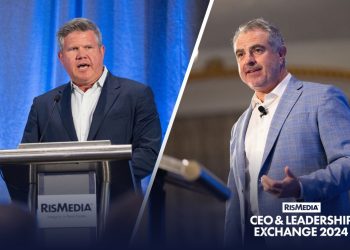
By Bill Catlette and Richard Hadden
RISMEDIA, April 18, 2008-On September 12, 1962 in one of the best speeches ever made, President John F. Kennedy committed the nation to a path of manned space exploration that would take us to the moon. It launched a hope, a dream, a view of the future as bold and bright as the moon that he committed not just an agency, but an entire nation to reach.
Fully engaged by the challenge, NASA’s 36,000 employees, together with 376,700 federal contractors, including some of the world’s preeminent physicists, metallurgists, medical specialists, and engineers did the best work of their lives over the next seven years. All Americans held their collective breath on July 24, 1969, as astronauts Neil Armstrong, Buzz Aldrin, Michael Collins, and the Apollo 11 spacecraft returned safely to Earth. Mission accomplished.
Though we still venture into space, the results since then have been far less compelling. Ask 10 people what NASA’s mission is, and it’s unlikely you’ll discover the reason. You will be met by blank, deer-in the-headlights expressions, and random guesses, even from elected representatives who fund the agency.
And here’s why: People don’t perform in an inspired manner without big-time commitment to a compelling cause.
Think about it … every major achievement in the history of mankind has been accompanied by real commitment to a common purpose. Otherwise, Christopher Columbus and crew would likely have held out for better maps before they sailed off the edge of the known universe. Martin Luther King, Jr. and his supporters probably wouldn’t have marched into Selma, and Astronaut Alan Shepard might have suggested sending more monkeys up before strapping his rear end to a relatively untested rocket. Well, the same goes in the business world.
In a recent leadership seminar, participants were asked to describe their organization’s mission or core purpose. The result? Those same “deer-in-the-headlights” looks and wild guesses. When the members of the assembled senior management team were asked individually to write down the organization’s three top priorities, the answers revealed incredible disparity. To wit, it is no wonder that many organizations struggle mightily to gain traction. Here are some thoughts that will help management create employee motivation through a common mission:
1. Make It Clear
Legend has it that shortly after signing on as head coach of the Green Bay Packers, Vince Lombardi whistled practice to a halt one day, assembled his players – who had grown way too accustomed to losing – and got real instructive about the organization’s core purpose. Picking up one of the practice balls, he began with the statement, “Gentlemen, this is a football.”
Investment guru, Peter Lynch, in his book, “Beating the Street” advises investors not to put their money into anything they can’t explain with a crayon. He reasons that if you can’t explain it with such a simple instrument, then you don’t understand it. Lynch’s advice is as good for the manager as it is the investor. If a manager can’t explain with that very same crayon what the organization is all about and where it’s going, then the employees can’t explain it, and people won’t buy it.
2. Beware Mission Flatulence
You can’t go anywhere without hearing or seeing some kind of corporate (or individual) noise, usually expressed on a poster, plaque or t-shirt, about the entity’s mission statement. Here’s an idea: put your marketing and PR folks to work on other tasks. Slick images, hype and buzzwords are not helpful here. Given the level of cynicism that exists today, if you expect people to believe in it, let alone support the cause, it must be simple, straightforward, and not wobbling or morphing into something else as time passes.
3. Compelling
Modest objectives beget modest effort, period.
4. Consistency Matters
As former NFL head coach, Jimmy Johnson once said, “Confused players are not very aggressive.” If the folks on your team see the game or the goalpost changing on a regular basis, or words and deeds not matching up, expect to see some confused, disillusioned players who are going nowhere.
5. Having an Adversary Helps
Shortly after American Airlines flight 77 was crashed into the Pentagon on 9/11, Lee Evey assumed responsibility for reconstruction of the building. Evey set an extremely ambitious goal of having the damaged portion of the building rebuilt and ready for occupancy within one year.
Reconstruction quickly began, with crews working in shifts around the clock. Commitment to the task was off the chart as workers plowed into their jobs with a level of determination seldom seen on construction projects. Practically no one quit the job. When workers got banged up, they kept on working. Indeed, Evey got some pushback from workers when he wanted to shut the project down for a couple of days at Christmas. Ultimately, the work was completed, well inside the 12-month deadline, due in no small part to the discretionary effort of thousands of individual workers, who each made daily decisions to go the extra mile.
No doubt, many factors contributed to the extraordinary level of effort. For sure, one of them was the large “countdown clock” standing watch over the job and reminding everyone of the days and hours remaining until the work was to be completed. And, if any further incentive was needed, the top of the clock bore the words, “Let’s Roll” as a not-so-subtle reminder of just why they were there, and who put the big hole in the side of the building.
In short, the ‘ole effort meter often gets a boost from the presence of an adversary. As FedEx founder and Chairman, Fred Smith once said, “If UPS weren’t around, we would have had to invent them.”
Whether your team competes on the global stage or a three unit cube farm, they will move faster, get more done, have more fun, and make more money if all hands on deck share a common sense of purpose and direction. Make it your business to see that they get it … really get it.
About the Authors:
Bill Catlette and Richard Hadden are the authors of the newly released, “Contented Cows MOOve Faster.” The two founded Contented Cow Partners, LLC to help business and organization leaders produce better results through a focused, fired-up and capably led workforce.
For more information, visit www.ContentedCows.com.










